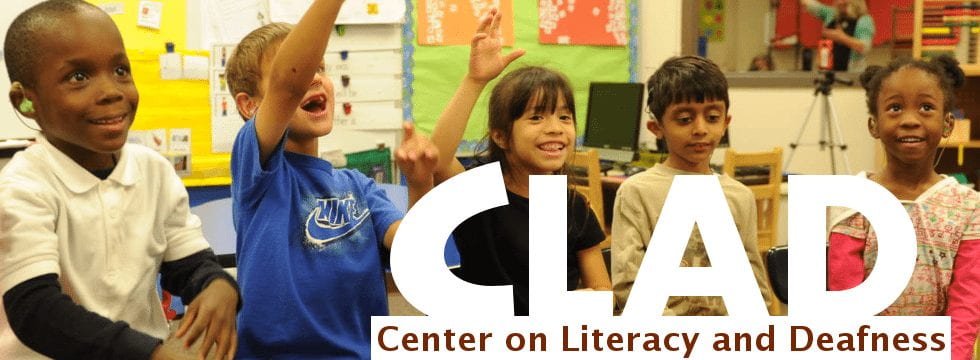Center on Literacy and Deafness has been developing several interventions that are available to teachers. We want to give you a little information to choose the best intervention for your program. Please follow the links to learn more about each program.
Foundations for Literacy is an early literacy program—focused on the basic preliteracy skills that are developmentally appropriate for preschool and kindergarten children. Targeted learning objectives include letter-sound correspondence, spoken phonological awareness, vocabulary, narrative skills and reading of decodable words and short connected text. Weekly lessons are organized on learning the sounds of English and then associating those sounds with letters. The children also are taught to decode letters in printed words into spoken phonemes and to blend letters into spoken and/or signed words. Teachers use short stories, language experiences, and storybook reading to teach vocabulary and narratives. Teachers have successfully implemented Foundations in both Listening and Spoken Language and in Total Communication programs (those that use both speech and sign to communicate with their students). We also have a new edition that guides teachers to substitute fingerspelling activities for sound-based ones for children who are not acquiring spoken language. This adaptation has been successfully implemented in bilingual ASL-English programs. Over 1000 teachers in every state in the USA have been trained in implementing Foundations for Literacy. Visit our website to learn more about the program and how to bring it to your classroom.
Fingerspelling Our Way to Reading is specifically designed for DHH children in kindergarten through second grade attending bilingual ASL-English programs. CLAD has evidence that DHH children who do not access spoken English may learn to read through an alternative pathway—namely through fingerspelling and explicit bilingual instruction. That is why CLAD team members have developed Fingerspelling Our Way to Reading. Targeted learning objectives include fingerspelling phonological awareness, word reading, reading comprehension, reading fluency, and vocabulary. Weekly lessons are organized around fingerspelling word families. Children are given extensive practice fingerspelling and reading words. Vocabulary, conceptual understanding, and reading comprehension are built through the use of ASL stories and reading original storybooks. Fingerspelling Our Way to Reading has been widely disseminated to schools and teachers across the U.S. since 2018. To learn about the program and how to bring it to your school go to the Fingerspelling Our Way to Reading website.
Explicit Contextualized Vocabulary Instruction (ECV-DHH) is an approach to content area vocabulary instruction for use with young Deaf and Hard of Hearing (DHH) students. The explicit and in-context instructional strategies are designed to teach students new vocabulary and give them practice in expressing target words in connected language. CLAD data show that V4S can be successfully used with children who use listening and spoken language, total communication, or ASL. The V4S manual and sample instructional units are currently available on our website at Explicit Contextualized Vocabulary Instruction.
Thank you for your interest!
The CLAD leadership team
Amy Lederberg
Susan Easterbrooks
Brenda Schick
Shirin Antia
